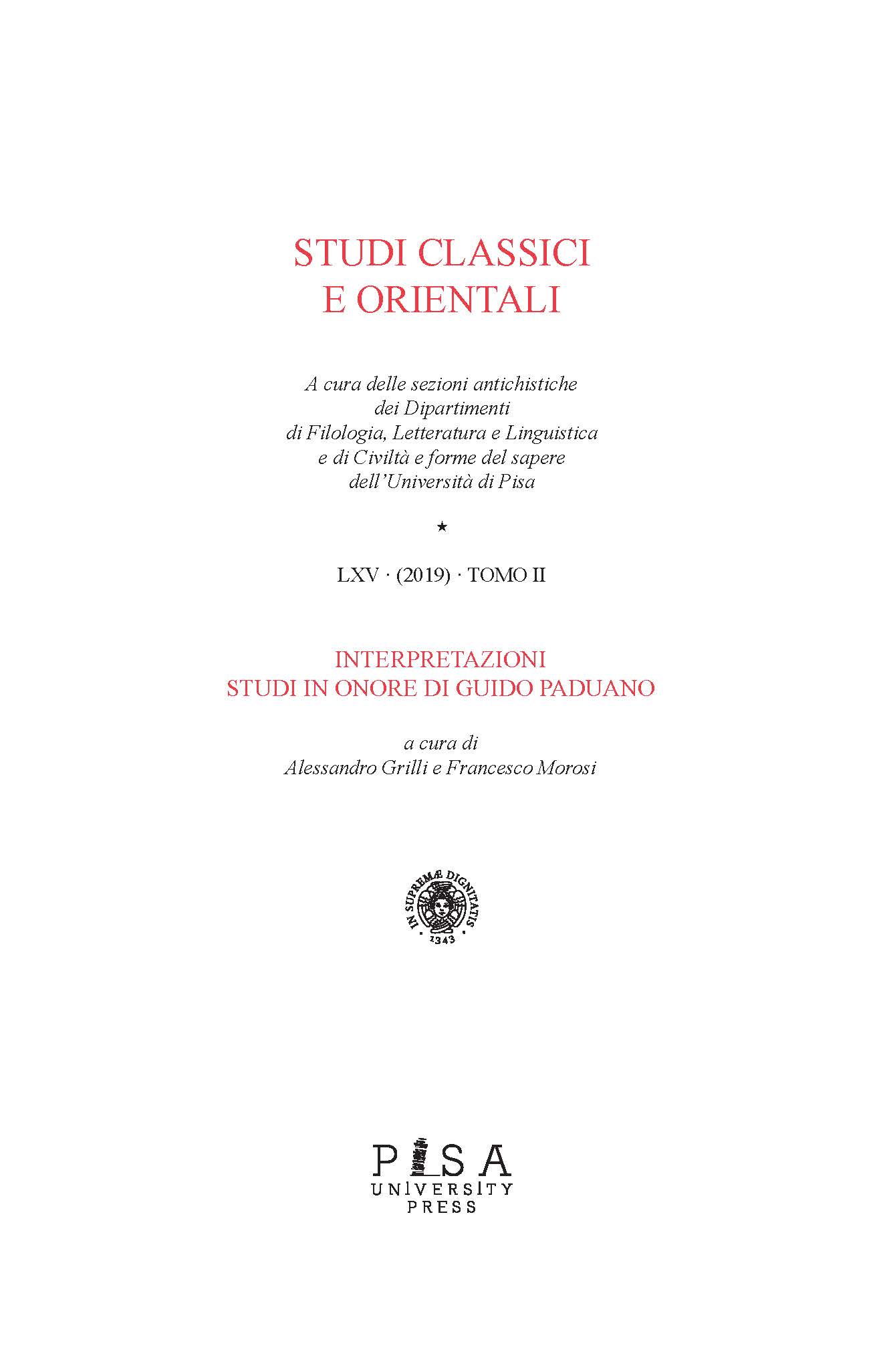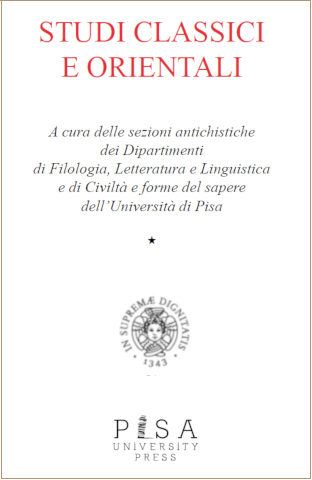L’architetto e il cielo. Interpretazione di Marziale 7, 56, 1 (con un appunto su Ovidio, Tristia, 3, 1, 63)
Abstract
The architect and the sky. Interpretation of Martial 7, 56, 1 (with a remarkon Ovid, Tristia 3, 1, 63)In the epigram 7, 56, a concise eulogy of the architect responsible forthe new Domitianic palace, Martial, addressing him, says that, due tothis magnificent work, he ‘took’ (cepisti) the starry sky (astra polumque)by his pious mind (pia mente). The interpretation along which thisis a metaphor for the conquering of an immortal fame is here rejectedon the basis of an analysis of this kind of expressions: a formulationlike this would suggest too decidedly an apotheosis and, what is more,an apotheosis obtained while the person is still living. This could not besuggested for anyone, except for the ruling emperor. A more commoninterpretation, and surely the right one, is that the architect ‘took’ thesky as his model: but such an anomalous meaning of capio requiresan explanation. In the Platonic tradition of thought, represented alsoin several Latin texts, the artist ‘takes’ from a model the elements bywhich he constructs a mental image that is the true model for his work.An analysis of the various patterns of expression by which these conceptsare conveyed, shows that this is the very meaning of cepisti in thepassage by Martial, as I.F. Gronov (1639) had in some measure realized in a forgotten and partly misleading remark on a passage of Ovid.Contrary to the opinion of Gronov, precisely if this is the meaning ofcapio in the verse of Martial, this passage can’t support (as also Luckhat thought) the reading cepere in Ovid, Tristia 3, 1, 63, where capio, ifthe text correct, must have a different meaning.Fascicolo
Sezione
Articoli



